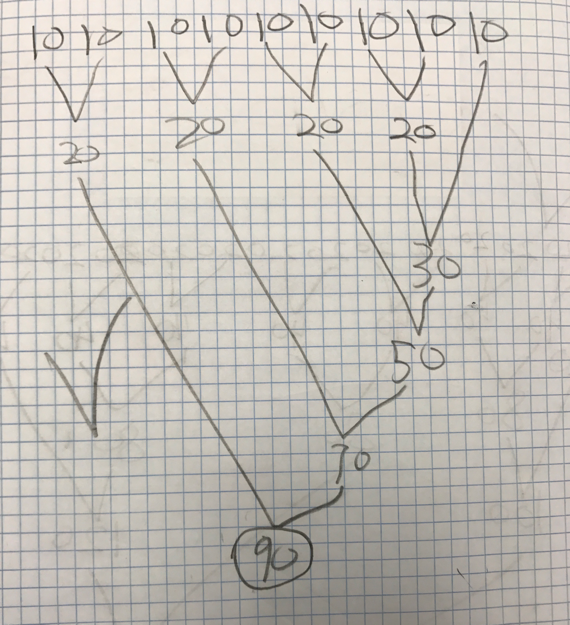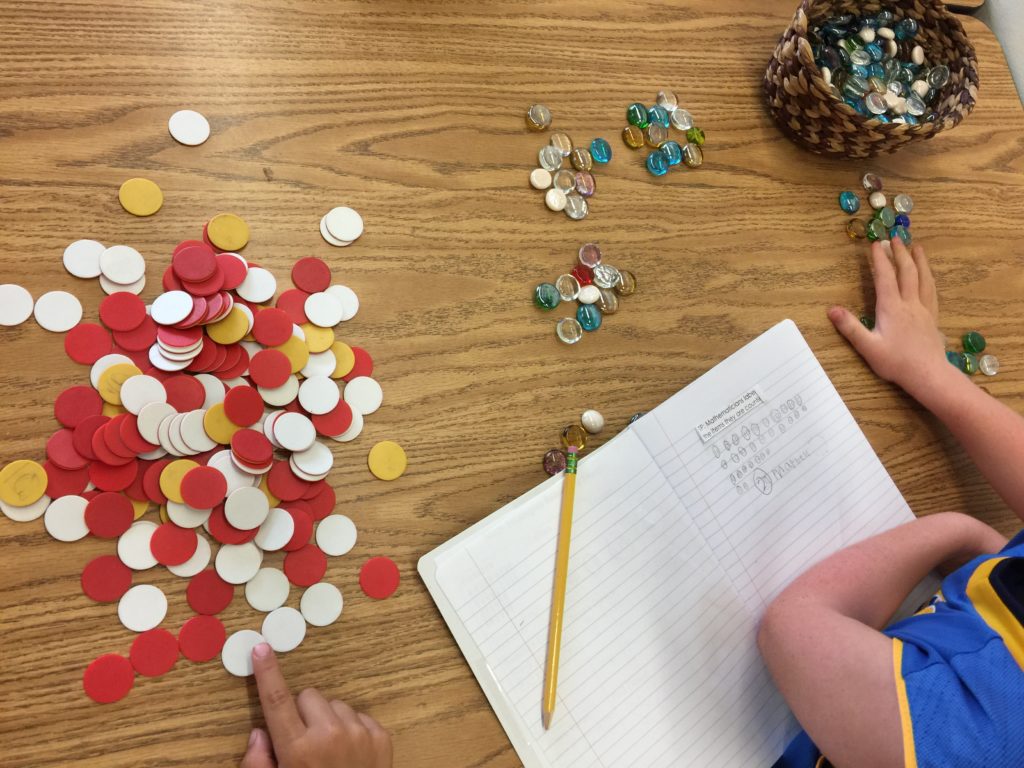Our school uses Cognitively Guided Instruction (CGI) to teach mathematics. At the beginning of the school year, one of my goals is to learn about students’ mathematical thinking and experiences. I typically begin the year with counting collections to observe, as well as to provide students with opportunities to learn and discover, one-to-one correspondence, how to skip count, and ways to group numbers to be able to count more efficiently and accurately. Counting collections lays the foundation of the base ten system and helps students make sense of number operations (e.g., addition, subtraction, multiplication and division). Students count a collection of objects. They may count these objects one at a time, or they may decide to group objects. Once students have counted and organized their collections, they record their counting. I conference with students individually or in small groups to understand their thinking and strategies, and if need be, focus on any areas of struggle. Students explain their thinking in partnerships, small groups, and whole-class discussions. The students and I learn from one another in this process.
Teacher Educator Blog | CGI Math
Ownership, Agency, and Mathematical Properties
Intermediate: 9-10 year olds
CGI Math
A mixed-age classroom of kids is working on the second story problem of the year. This multiplication problem is about our principal, Ms. Silva, and her many pizzas:
Principal Silva has 9 pizzas. Each pizza has 10 slices. How many slices does she have?
CHALLENGE: How many pizzas does she need to buy to have one slice for each of our 119 Intermediate students?
Today, there is a juicy scenario happening between two of the youngest children that I’ll call Nate and Kate. Nate solved the problem quickly and recorded his thinking with ease.

Primary Classroom Doing Counting Collections
Primary: 6-8 year olds
CGI Math

Two students were sitting together, each counting his own collection, but working side by side. One student had counted and recorded marbles in groups of 10. The other had a very large basket of red and yellow tokens on his lap counting them by 1’s as he removed them from the basket. He was on 310 when I arrived. Our conversation went as follows:
Teacher: (to the 2 students) Can you each tell me about your strategies for counting?
Child 1: I counted the marbles and wrote groups of 10, then a 4. The total is 84.
Child 2: I am counting these tokens by ones. See….310, 311, 312…
Teacher: (to child 2) I am wondering what you might do if someone bumped into the desk and some of the tokens you have already counted fell back into the basket.
Child 2: I would start over at the beginning.
At this point, my assumption was that this child was not aware of the benefit of grouping the tokens. I decided to ask Child 1 more about his grouping technique to see if Child 2 might benefit from overhearing our conversation.
